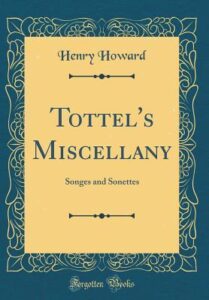Hamnet by Maggie O’ Farrell, Book Review

“Every life has its kernel, its hub, its epicentre, from which everything flows out, to which everything returns.”
Maggie O’ Farrell’s novel “Hamnet” is a captivating and emotional retelling of the story of William Shakespeare’s son, Hamnet, and his death. The novel is set in 16th-century England and explores the lives of Shakespeare and his family, particularly his wife, Agnes (also known as Anne Hathaway), and their relationship with each other and their children.
Death and Beyond Death:
One of the most poignant aspects of “Hamnet” is the way that O’ Farrell handles the death of Hamnet. The novel is not a traditional tragedy. From the beginning, there was not a single hint of Hamnet’s illness or impending death. all were a concern for Judith, even Hamnet. To turn aside death from its route to Judith, Hamnet exchanges death bed with Judith. He takes Judith’s illness and dies as if offering her the chance to live. Hamnet’s death though unpredicted is not the central theme here. Rather the impact of his unexpected death on the family becomes the major concern in the author’s pen. This approach allows O’ Farrell to explore themes of grief, loss, and love in a way that is both moving and insightful.
Parallel Plot-line:
Maggie O’ Farrell’s novel “Hamnet” is split into two timelines that run parallel to each other. The first plot follows the life of Hamnet, the young son of William Shakespeare and his wife Agnes. This plotline begins with Hamnet’s birth and traces his short life as a curious and adventurous child. The story begins with the illness of Judith, the twin sister of Hamnet who is 11 years old. Hamnet searches for the family members but finds none. He then waits desperately for his mother to return. Agnes, their mother returns and tries every means to save her child. In the meantime, Hamnet gets the symptoms of illness without anyone’s concern for him as everyone in the family is busy with Judith. Hamnet cannot tolerate the thought of his sister being dead. So he exchanges Judith’s clothes and decides to take her place. When he dies from the plague, her sister was suffering from, the narrative shifts to explore the impact of this unexpected sudden death on his family, particularly his mother Agnes.
“She feels her hope for him begin to leak from her, like water from a punctured bucket. She is a fool, a blind idiot, the worst kind of simpleton. All along, she thought she needed to protect Judith when it was Hamnet who was destined to be taken.”
The second plotline follows Agnes’s life before and after Hamnet’s death. Through this plotline, the reader learns about Agnes’s childhood, her unconventional upbringing, her special abilities to get divine information from people through her hands and her healing power and her courtship with William Shakespeare. After Hamnet’s death, the two timelines begin to converge, with events from one timeline echoing and reflecting events in the other.
Now the narrative focuses on Agnes’s grief and her attempts to come to terms with her loss. Even her tough and complicated relationship with her husband who proves irresponsible and disloyal to her is exposed in this section. As Agnes grieves for Hamnet, she begins to explore her own life and her relationship with William. She remembers their courtship and their early years together, and she begins to question whether she has truly known her husband. Meanwhile, Judith struggles to come to terms with her twin brother’s death and her own place in the family.
The novel reaches a climax with the writing of “Hamlet,” by William which is inspired by Hamnet’s life and death. William’s creative output becomes a way for him to express his grief and honour his son’s memory.
Narrative Style:
The narrative style of parallel plotlines creates a rich and complex story that allows the reader to see how different characters are affected by the same events. It also emphasizes the interconnectedness of the characters’ lives, highlighting how the loss of one person can reverberate throughout an entire family.
Alvina’s Verdict:
One of the things that makes “Hamnet” such a powerful read is O’ Farrell’s lyrical and evocative writing style. She paints vivid pictures of the sights, sounds, and smells of Elizabethan England, bringing the setting to life in a way that makes the reader feel as though they are there. O’ Farrell’s prose is poetic and insightful, and she has a real talent for capturing the complexities of human emotion. The novel is told from multiple perspectives, which allows the reader to see the story from different angles and gain a deeper understanding of the characters and their motivations.







Pingback: A Long Walk to Water by Linda Sue Park Book Review